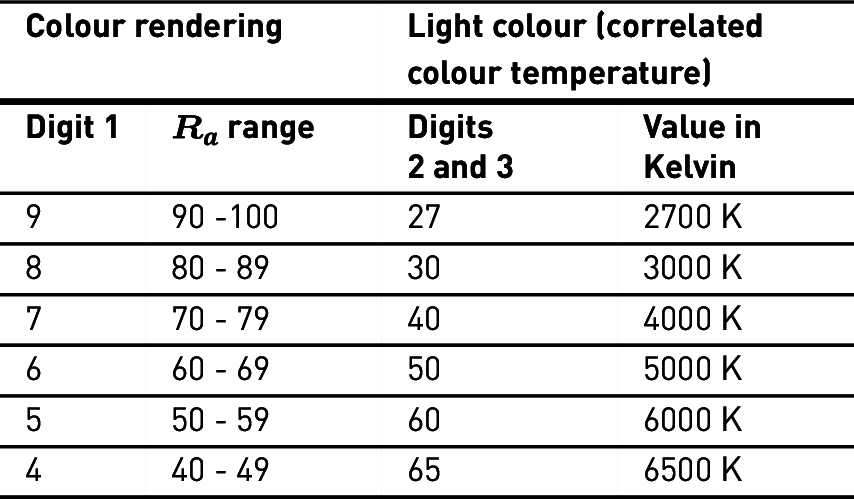For visual performance, comfort and well-being, it is important that the colours of the surroundings, objects and human skin are rendered naturally and realistically. This makes people appear attractive and healthy. Dependent on location and visual task, artificial light sources should ensure correct colour rendering comparable to natural daylight (see also figure and figure).
Colour rendering

Figure 3.256: Good colour rendering

Figure 3.255: Insufficient colour rendering
Despite featuring identical light colour, light sources can have different colour rendering properties due to different spectral compositions of their radiation. In order to express colour rendering properties of a light source objectively, the general colour rendering index Rα was established. The colour rendering index is the measure of correspondence of the seen body colour and its appearance under the respective reference light source. To determine the value of Rα, colour variations from 8 standardised test colours occurring when the test colours are illuminated using the light source to be evaluated/the reference light source are identified. The smaller the variation, the better the colour rendering characteristic of the tested light source. A light source with Rα = 100 renders all colours ideally as under the reference light source. The lower the Rαvalue, the lower the quality of the colour rendering. A categorisation of market-based light sources for the colour rendering levels can be found in table 9.3. The reference light type for daylight white light sources is natural daylight with a colour temperature of 6,500 K, corresponding to an overcast sky without direct sunlight. For light sources with a colour temperature of < 5.000 K, the reference light type is the Planckian radiator.
Lamps with a colour rendering index below 80 should not be used indoors where persons work or linger for extended periods of time. Exceptions are permissible for particular lighting tasks requiring high luminous efficacy and therefore lower colour rendering for economic reasons, for example high-pressure sodium vapour lamps. This applies e.g. for the lighting in high halls. However, appropriate measures should be taken in these cases in order to ensure a higher colour rendering at stationary and steadily occupied workstations and at locations where safety colours must be identified correctly. As the use of LED luminaires becomes more widespread, this issue increasingly fades into the background. High illuminance values can also be realised with these light sources, featuring good colour rendering and at economically reasonable expenses. This has been already taken into account in the current efforts of photometric standardisation.
Manufacturers have committed themselves to a simple, generally comprehensive international labelling for light colour and colour rendering of lamps and LED luminaires in addition to manufacturer-specific labelling. It consists of three digits as depicted in table. Regarding LED light sources, colour rendering properties are expressed by the rated colour rendering index which refers to the colour rendering at initial commissioning.

Table 3.169: Ranges for the general colour rendering index Ra

Table 3.170: Colour labelling of lamps/luminaires with integrated light sources independent of manufacturers.